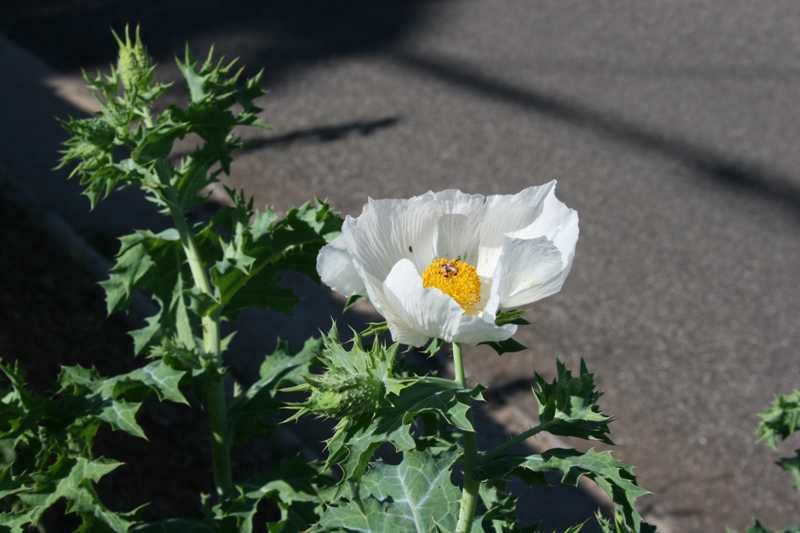Prickly poppy (Argemone polyanthemos)
Prickly poppy
Argemone polyanthemos, commonly called prickly poppy, is a deep-taprooted annual or biennial that is native to sandy and grassy soils on plains, slopes, foothills and roadsides from Texas and New Mexico north to Wyoming and South Dakota. It has been introduced or has spread to some areas adjacent to the original range, including west of the Rocky Mountains. This species has fewer prickles than most other poppies in the genus, and is particularly distinguished by the absence of prickles on upper leaf surfaces. Plants typically grow to 3’ (less frequently 4’) tall clad with leaves (to 8” long) that are lobed. Leaves and stems are pale blue green. Flowers (3-4” wide) bloom from late spring into summer. Each flower has 4-6 crumpled white petals and a dense center cluster of yellow stamens. Flowers give way to sparsely prickly seed capsules in late summer. Broken stems ooze an orange-yellow sap. All parts of the plant are poisonous. Plants were once used as a cataract treatment.
Genus name comes from the Greek word argemon for a poppy-like plant.
Specific epithet means many flowers.

Grow in average, dry to medium moisture, well-drained soils in full sun. Performs well in sandy or gravelly soils of somewhat poor quality. Plant new seeds in the ground each year slightly before last spring frost date. Plants dislike transplanting and can be difficult to start indoors in pots. Plants may self-seed in the garden.
| Hardiness zone | 2 - 11 |
| Sun light | Full sun |
| Water | Dry to medium |
| Maintenance | Low |
No serious insect or disease problems. Downy mildew, anthracnose and root rot may occur.
Garden annual for beds and borders.
| Common name | Prickly poppy |
| Botanical name | Argemone polyanthemos |
| Plant type | Annual |
| Family | Papaveraceae |
| Hardiness zone | 2 - 11 |
| Water | Dry to medium |
| Maintenance | Low |
| Flower color | White with yellow center stamens |
| Flowering period | June - August |
| Height | 2 - 4 ft. |
| Width | 1 - 2 ft. |